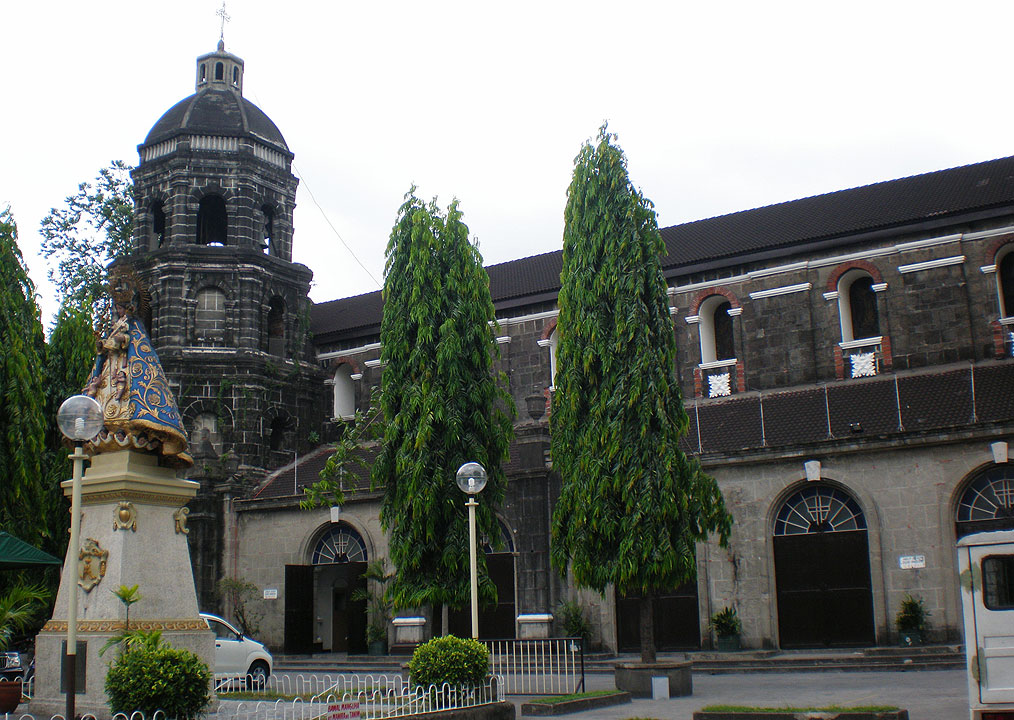Manila’s heritage sites in danger amid rapid development

Brontë H. Lacsamana, Reporter
STEPHEN JOHN PAMORADA, a 29-year-old native of the San Nicolas district in Manila, the Philippine capital, grew up in an area filled with colonial period architecture.
When he was young, he would type “old Manila” in Google to find beautiful photos of how the city used to be. In contrast, he would see with his own two eyes the same spots in the photos being demolished over time, one by one.
“That was the turning point for me to get involved in heritage conservation,” Mr. Pamorada said via Zoom.
Now as lead convenor of Manileños for Heritage (M4H) and tour guide with Renacimiento Manila, he helps Manileños gain knowledge about the rich heritage of their city and the skills to preserve it.
 “This means empowering locals to write letters and petitions to the National Historical Commission of the Philippines (NHCP) or National Commission for Culture and the Arts (NCCA) to save heritage sites,” he said.
“This means empowering locals to write letters and petitions to the National Historical Commission of the Philippines (NHCP) or National Commission for Culture and the Arts (NCCA) to save heritage sites,” he said.
Most recently, residents of Village 885, Zone 97 in Manila petitioned to block the construction of a Suntrust condominium about 170 meters from Spanish colonial-era Santa Ana Church.
In January, heritage advocacy group Renacimiento Manila also sounded the alarm to protect two sites from demolition — the 1920s Art Nouveau-style Traders Building in Binondo, and the Zamora and Paterno Houses built in the 1800s in Calle Hidalgo, Quiapo.
Under the National Cultural Heritage Act of 2009, a structure that’s more than 50 years old must be protected, and any construction work within it and around its 200-meter buffer zone must be authorized by NHCP.
“Unfortunately, there’s internal politics in LGUs where their cultural office and the engineering and building officials that issue demolition permits fail to coordinate,” said Mr. Pamorada, citing instances where the heritage law is not closely followed.
As middlemen, advocates can write the mayor a letter about this, or call the attention of cultural agencies so they can monitor the situation and ensure less destructive plans for the sites.
Both NHCP and NCCA are at the forefront of safeguarding Philippine heritage, whether these are historical structures, traditional food, art forms like music and dance, or intangible practices.
“We’re mandated to conserve, promote, and popularize the nation’s cultural heritage… because of its primordial role in fostering nationalism and uniting our people,” NCCA chief Victorino M. Manalo told an April 18 briefing for National Heritage Month in May.
In 2021, NCCA published the Philippine Registry of Cultural Property, which showed that the district of Sta. Ana had the most heritage sites at 88, followed by the districts of San Nicolas and Malate with 78 and 55.
The numbers have likely gone down due to rapid urban development, said Mr. Pamorada, who used to lead the data gathering.
Much can still be done for the Traders building in Binondo and Zamora Houses in Quiapo because their facades are intact, but many other structures are not so lucky.
The Capitol Theater made headlines in 2022 after almost completely being demolished, with only ruins of its worn-out facade remaining and seemingly waiting to be torn down for a condominium to take its place.
‘A COUNTRY OF LAWS’
Making a registry is the easy part, with NCCA and the Heritage Conservation Society of the Philippines having done their own audits, architect and urban planner Paulo G. Alcazaren said in an interview.
“The problem is that most landowners and developers just go over the heads of the local government,” he said. “There are many guidelines — we are a country of laws, after all — but nobody follows them.”
One of the themes for National Heritage Month is urban heritage, which “emphasizes the call for heritage conservation especially in the urban setting in the 21st century.”
Last year, local housing prices rose faster, driven by strong demand for duplex housing and condominium units, according to the Philippine central bank.
The property development was evident in the residential real estate price index, which went up by 7.7% year on year in the fourth quarter, quicker than 4.9% in 2021.
“In an imperial Manila setup, where we crowd here and create demand for housing and commercial spaces, the cost-benefit analysis is clear,” said John Paolo R. Rivera, an economist and associate director at the Asian Institute of Management’s (AIM) Dr. Andrew Tan Center for Tourism.
“Developers know it’s less costly and more profitable to demolish and then build, than to sustainably preserve and operate old sites,” he said.
He added that it’s only in places where tourism is the bread and butter, like Intramuros in Manila, Vigan in Ilocos, or Taal in Batangas, where investing in heritage is an easy choice. It’s not the case elsewhere.
Marjorie Jayne O. Zamudio, sales manager for Bridgeway Travel & Tours, said a few inbound tourists express interest in learning about authentic Filipino culture, lifestyle and values in Metro Manila.
“Agencies like ours that do customized tours based on the requirements of our clients find that there’s a niche that seeks out local heritage,” she said via Zoom.
Due to rising demand, the tour operator developed a program called “Back to the Roots,” formed from various clients who were Filipinos by blood but born and raised overseas, mostly in the US.
Heritage is a big priority for people who want to go back and understand their culture, Ms. Zamudio said.
International tourist arrivals in the Philippines hit 2.65 million last year, according to the Department of Tourism (DoT), exceeding the target by a million. The target this year is 4.8 million.
Mr. Manalo of NCCA said heritage sites could only draw big income for the Philippine economy if these are well-preserved and promoted, as with what the beautifully maintained Angkor Wat does for Cambodia.
Mr. Pamorada said districts in Manila like Quiapo, Santa Ana and his neighborhood of San Nicolas all have the potential to become beautiful tourist areas in a city that’s otherwise known for urban decay.
“Our culture may come across as lacking compared with South Korea, which invests in soft power like K-pop and K-dramas, or Thailand, which invests in gastro-diplomacy to popularize their food,” he said.
But there are efforts to change this mindset — cultural mapping by Grupo Kalinangan, heritage walks by Renacimiento Manila and NCCA’s programs to incentivize local governments to keep cultural inventory.
AIM’s Mr. Rivera said the monetary value of heritage sites goes up from the fact that, after hundreds of years, they still exist because efforts and funds were put in to keep them beautiful.
“That will only happen here if we can better acknowledge their potential.”
